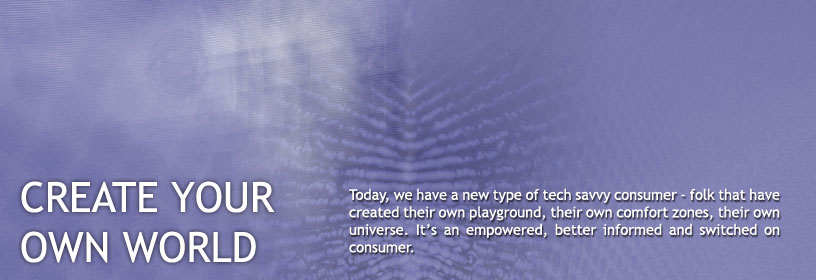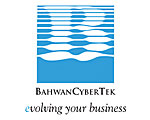Source: www.trendwatching.com

At the core is control: psychologists don’t agree on much, except for the belief that human beings want to be in charge of their own destiny. Or at least have the illusion of being in charge.
And just because they can now get this control in entirely new ways, aided by an online, low cost, creativity-hugging revolution that’s still in its infancy, young and old (particularly the young) consumers now weave webs of unrivalled connectivity and dig instant knowledge gratification. They exercise total control over creative collections, including their own creative assets, assume different identities in cyberspace at a whim, wallow in DIY/ customisation/personalisation/co-creation to make companies deliver whatever and whenever on their own terms, and so on.
Needless to say, it’s not a done deal. Not all power has or will shift in its entirety towards every single individual on this globe, but neither will the current hierarchies, in which consumers may now and then still find themselves on the bottom rung, survive. Eventually, consumers will stop at nothing to achieve and enhance their own status, and corporations have no choice but to facilitate this process. When technology, societal norms, demographics or any other fundamental force unlocks basic, deep human needs and desires in new ways, all the average company can do is to assist and serve.
To bring all of this down to earth, we have compiled a list of statistics, spottings and services that illustrate how tech savvy consumers are re-defining how they live.
Breathlessly Addicted
Tech savvy consumers are now officially addicted to online access, the fuel that keeps their world going. How connected and addicted are consumers? Well, consider the fact that 812,000,000 human beings are now online worldwide (Internet World Stats, September 2004), with Asia claiming most users, and China, with close to 100 million online addicts, boasting more online citizens than any other nation except the US. The word amazing would be an understatement. Which also goes for the fact that close to 100% of all teenagers in countries like The Netherlands, South Korea and the US rely on online oxygen to shape their everyday lives.
Case in point: a recent Yahoo/OMD Internet Deprivation Study, which involved 12 US based families going without any kind of online access for two weeks (backed up by a survey amongst 1,000 online users), found that, “regardless of age, household income or ethnic background, all participants in the ethnographic research study experienced withdrawal and feelings of loss, frustration and disconnectedness when cut off from the online world.
Furthermore, participants described their time offline as “having to resist temptation,” missing their “private escape time” during the day, and “feeling left out of the loop.” The latter should dispel most people’s fears about tech savvy consumers being egotistical: lack of communications figured most prominently in the withdrawal process. However, the most telling finding: “It was incredibly difficult to recruit participants for this study, as people weren’t willing to be without the Internet for two weeks,” according to Wenda Harris Millard, Yahoo!’s Chief Sales Officer. Take away online oxygen, i.e. confidence, security, social networks and empowerment, and worlds will implode.
Talking about empowerment: with humankind’s collective knowledge now at everyone’s fingertips, it shouldn’t come as a surprise that a poll conducted by MSN Search found that search engines are the first port of call for nearly half of men seeking advice.
As online oxygen becomes essential, so do the various devices associated with it: they simply cannot be shared.
Just witness how the concept of privatised ownership has invaded the family nucleus when it comes to mobile phones, iPods, game consoles, computers, BlackBerrys and digital cameras.
In the US, families can buy packages with up to five free mobile phones (FamilyTalk, FamilyTime etc), while in the EU, 80% of all kids aged 15+ own mobile phones. However, once tech savvy consumers have their tools, they’re definitely willing to share the content associated with it, as long as it’s on their own terms: the iPod, for one, is easily turned into a jukebox, play lists get exchanged, and sharing is the new giving. It’s all about control, not necessarily isolation: controlling one’s space, time, content, communications, one’s world.
Freedom, Mobility & Independence
In a not-too distant past, the automobile was the ultimate symbol of coming of age: a way out from parents, from siblings’ prying eyes, from geographical constraints. No longer: for hundreds of millions of consumers worldwide, ÔThe Cell Phone is the New Car’ (as The Economist stated in 2004). Consider these similarities between the automotive and wireless/handheld industries:
» Model and customisation define the owner
» Replacement is frequent
» Choice is massive
» Branding and design are key
» Competition is global
» Anticipation of new models is enormous
For tech savvy consumers, freedom, mobility and independence rule, and the mobile phone delivers these benefits to the youngest of generations.
Want numbers? The worldwide number of mobile phone users is estimated at 1,6 billion people in 2004 (from 1.3 billion in 2003).
A staggering 320 million of these users can be found in China. The global number will rise to 2.1 billion in 2009 (source: Ovum, July 2004). Close to 30% of all tweens (kids aged 6-15) in Hong Kong, Australia, Japan and Singapore own a mobile phone.
This number is 50% for most European nations. Germany and Sweden, with 65%, have the highest score. In The Netherlands and Japan, close to 100% of all 14 year olds possess a mobile phone. No wonder that in the UK, a group of teens who recently agreed to go without their phones for two weeks as an experiment (Manning Gottlieb OMD), told researchers that their “social lives had fallen apart” (source: The Independent).
And how about wanting three identities instead of just one? It’s estimated that 56% of online teens in the US have more than one e-mail address or screen name and most use different screen names or e-mail addresses to compartmentalise different parts of their lives online, or so that they can experiment with different personas. Boys report having multiple e-mail addresses or screen names more often than girls. Sixty-one percent of boys have more than one address, almost a quarter have four or more.
Half of online girls (50%) have more than one screen name or e-mail account and nearly one in five girls have more than four online identities.
The oldest boys (15 to 17) are the most likely to have more than one address, with two-thirds reporting multiple addresses. The most active Internet users are the most likely of all to have multiple addresses. Of those teens with multiple addresses, nearly one-quarter say that at least one of those addresses is a secret address that teens use when they do not want their friends to know that they are online (sources: Pew Internet & American Life: Teens & Their Friends).
The bad news: most companies don’t get the above. Yet. The good news: most companies don’t get the above. Yet.
We know you get it, and no doubt while reading this article you’ve come up with plenty of other indicators, observations or manifestations of the new tech savvy consumer, be it the blogging revolution or the hundreds of thousands of consumers making a living on eBay. So may we humbly suggest you start collecting these observations? Create your own file, box, folder, or whatever works for you and start connecting the dots.
se the above as the start of a framework, then closely observe your own changing behaviour and that of others when it comes to connecting, buying, selling, creating, communicating, learning, entertaining and so on.








